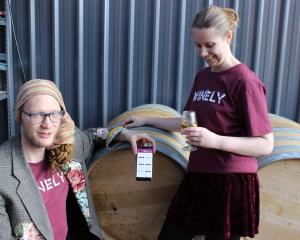
They key would be in the transition phase, how that was managed and how farmers were "helped along the way".
Having the public understand the issue and supporting the country’s pig farmers had to be a big part of it, she said.
Nawac— an independent body which advises the Government on animal welfare issues — and the Ministry for Primary Industries have been consulting on proposed changes to how pigs are farmed in New Zealand.
Among the proposals in the new draft code of welfare were changes to the use of farrowing crates and the amount of space that needed to be provided for grower and weaner pigs.
Farrowing creates were introduced in the 1960s, with the intention of reducing piglet mortality — confinement was a way to reduce the risk of crushing piglets — and to make the most efficient use of housing space.
Dr Verkerk said the concerns raised by North Otago pig farmer Ian Carter had been heard repeatedly.
But Nawac was bound to write standards that met the purposes of the Animal Welfare Act, and it was Parliament that required the change to the farrowing system.
Nawac’s review of the code followed a High Court ruling on farrowing crates and mating stalls.
In 2005, it was identified that the use of farrowing crates did not meet the Act because they failed to provide for behavioural needs, but they had a legislated exemption.
In 2015, with an amendment to the Act, Parliament removed that exemption. That was identified in 2020 and the current use of farrowing crates was ruled illegal.
The High Court recommended introducing new rules regarding their use and the Government agreed to phase them out by 2025.
It has been Nawac’s view that many features of farrowing crate systems failed to met the purposes of the Act; those concerns related to the restrictions on the sow and the lack of opportunity to display many of the normal behaviours between sow and piglet.
Dr Verkerk said one of the purposes of the Act was to recognise animals were sentient, which meant they had emotions and feelings; Nawac was required to recognise that and that placed greater emphasis on behaviour.
Having a system that enabled pigs to display their normal behaviour was a significant obligation.
While the likes of food, water and shelter had always been a part of good animal welfare, those emotional feelings now also needed consideration.
"What sows need is the opportunity to behave normally, we have to meet that need," she said.
Having the space for a sow to spread out with her piglets was a concept which was being developed in European countries, she said.
Prior to the draft code being released for consultation, a Nawac sub-committee met with the pig industry, visited pig farms and saw different examples of pigs being farmed. Members had also met overseas scientists and industry representatives.
Dr Verkerk acknowledged pig farmers "sadly" did not like the draft and she said Nawac fully appreciated all the other pressures on them.
But in her judgement in the High Court, Justice Helen Cull specifically directed Nawac to look at animal welfare; it could not get "caught up in other arguments" — "while we all feel very deeply for the dilemma this creates", Dr Verkerk said.
"It’s a difficult one. We have to meet the Act, we have to find a pathway to get there," she said.
She could not give a timeline for the outcome. There was a "whole lot" of further process to be involved before it returned to the minister responsible for animal welfare and went through Cabinet.
There would be regulation required and once the "final destination" was figured out, then it would need to be established how long it would take to get there, and a transition time set.
Membership of Nawac changed on a rotational basis and, by the time it got finalised, some would have moved on.
That included Dr Verkerk, whose term was finishing at the end of October, along with another committee member, so they were trying to do as much as possible by then. A new appointee had done their PhD in pigs, she said.
Substantive issues would have to be taken back to the full committee and there would be further meetings with affected parties, including animal advocacy groups.
If there was science that Nawac had not looked at already, then that had to be considered. Whatever was finally decided would also be peer-reviewed.














